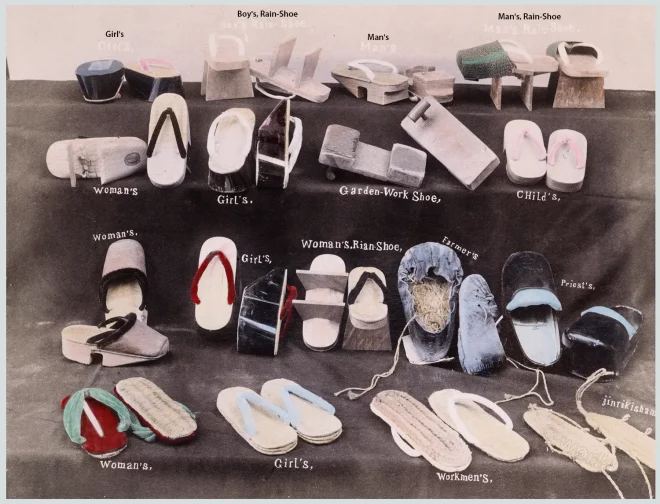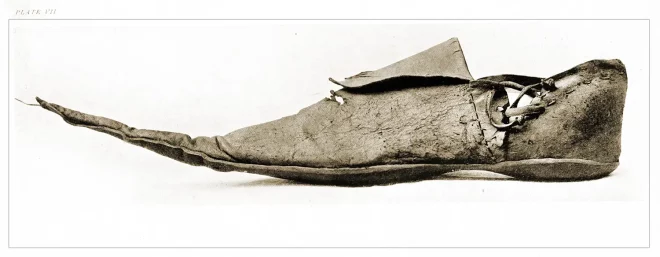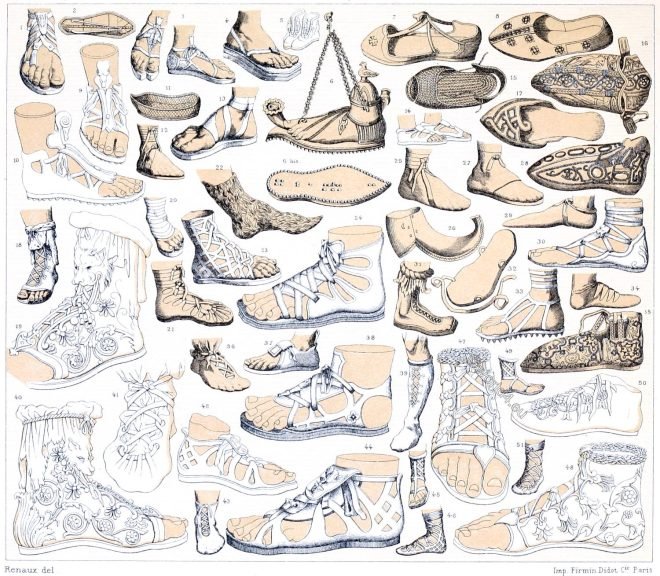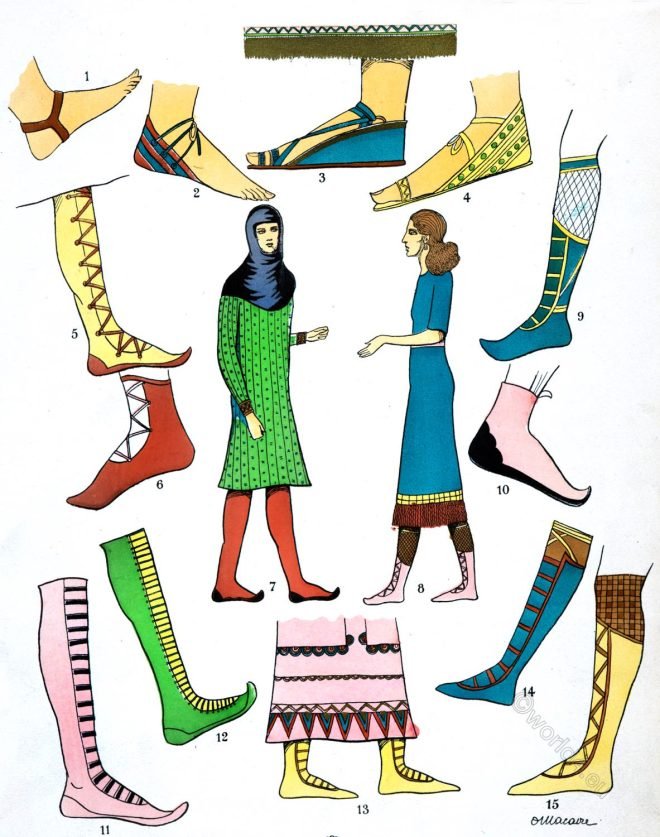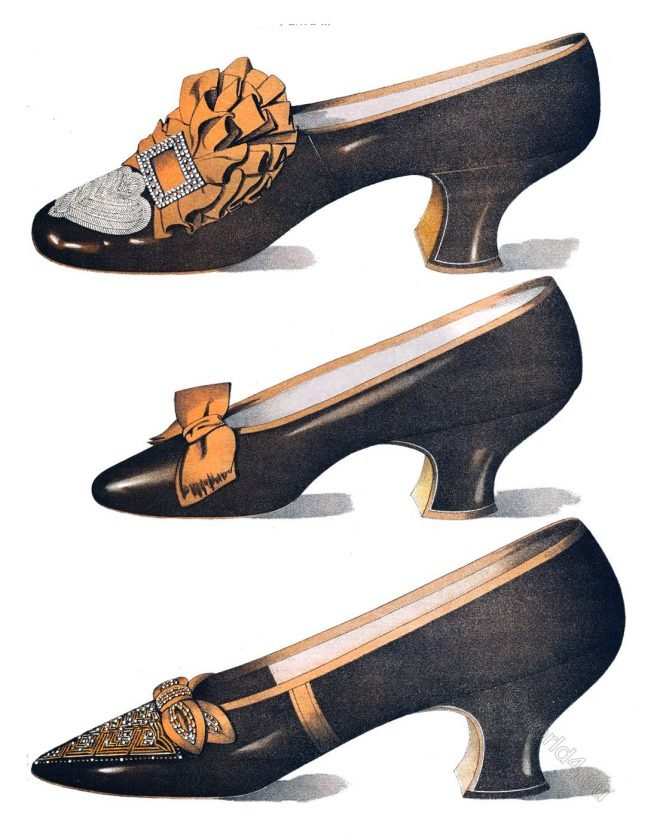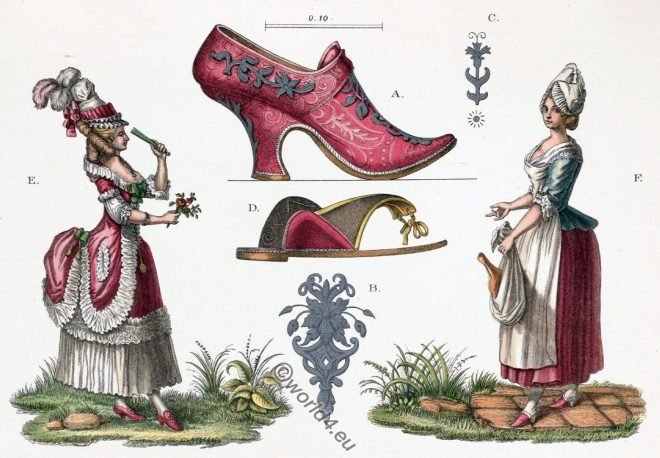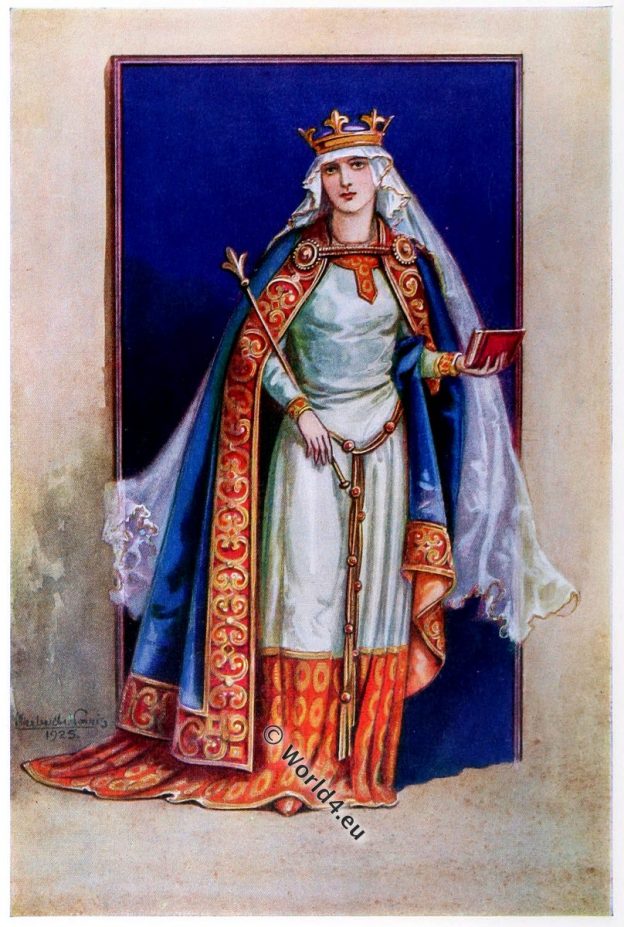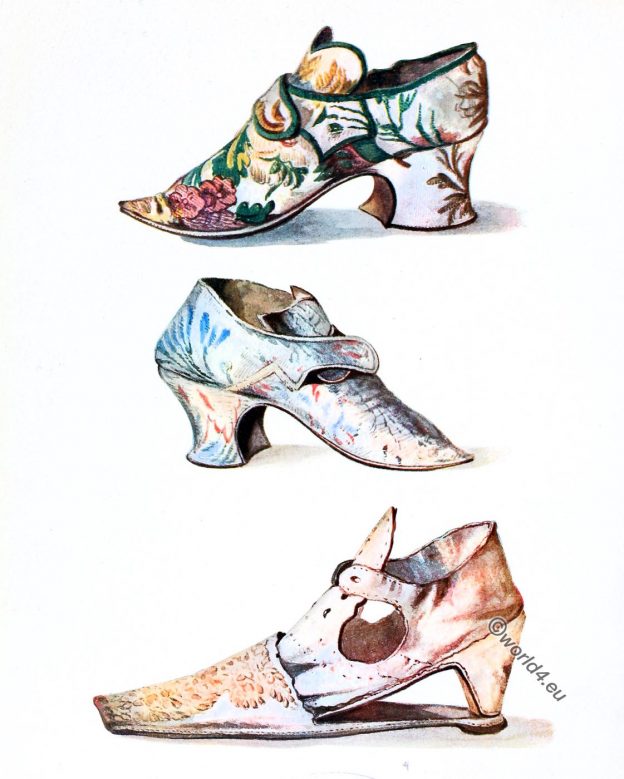The variety of Japanese shoe shapes and designs is mainly tailored to the weather conditions and the wearer’s profession.
Category: Shoes
Leather Beaked Shoe, Poulaines or Crakows of the 15th century.
Royal and historic gloves and shoes. The Crackow was found in an ancient house in Toledo.
Shoes of antiquity. Sandals, closed footwear of the ancient world.
Classical Antiquity. Footwear. Fashions and Customs. Calceus, Ocrea, Caliga, Campagus, Crepida, Solea, Pero, Ceremonial shoes, Runner’s boots, Lace-up shoe.
Assyrian Footwear. Shoes, Sandals, Boots, Stockings.
The feet of the Assyrians were covered by sandals with uppers, embracing the heel, and leaving the instep and toes uncovered.
Bronze stage shoe of Ada Cavendish with Louis heel. Victorian Era.
Three bronze shoes, the first worn on stage by the actress Miss Ada Cavendish. Ladies’ Dress Shoes of the Nineteenth Century.
Victorian Era. Three fine specimens of the modern shoemaker’s craft.
Victorian Era. Shoemaker’s craft. The cordonnier artist (shoemaker, cobbler) has apparently considered his lines as carefully as the best of yacht builders.
Shoe fashion with high heels and rococo costumes. 18th century.
Female costumes from the 2nd half of the 18th century.
England Anglo-Norman fashion history, 1087-1100.
Fashion and costume history in the Reign of William II, called William Rufus. Medieval England Anglo-Norman 1087-1100.
Norman Fashion Era. England Middle Ages 11th c.
Norman fashion era in England 1066-1087 according to historical sources.
Reign of William I. (The Conquerer) and Matilda of Flanders.
Shoe fashion of the 17th and 18th century.
Examples of combined shoes and clogs. Shoe fashion of the baroque and rococo period.

